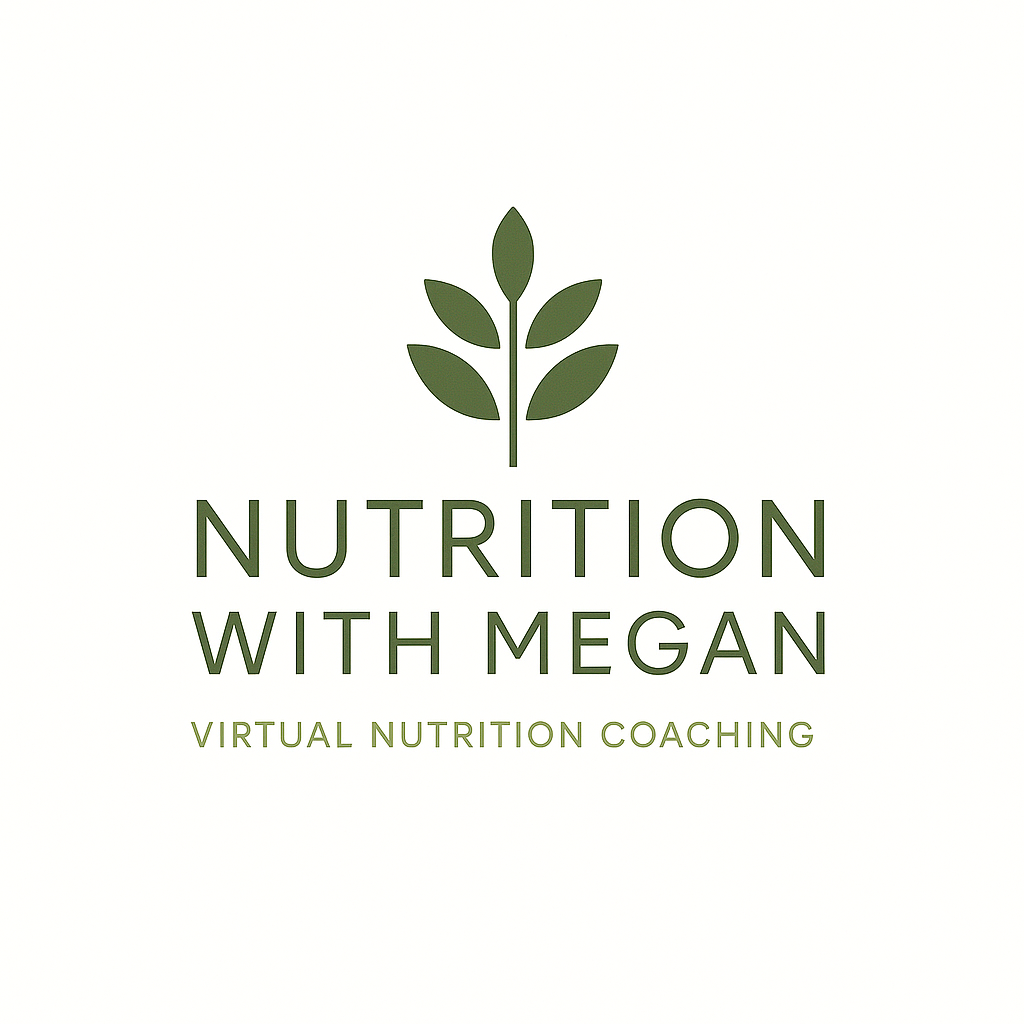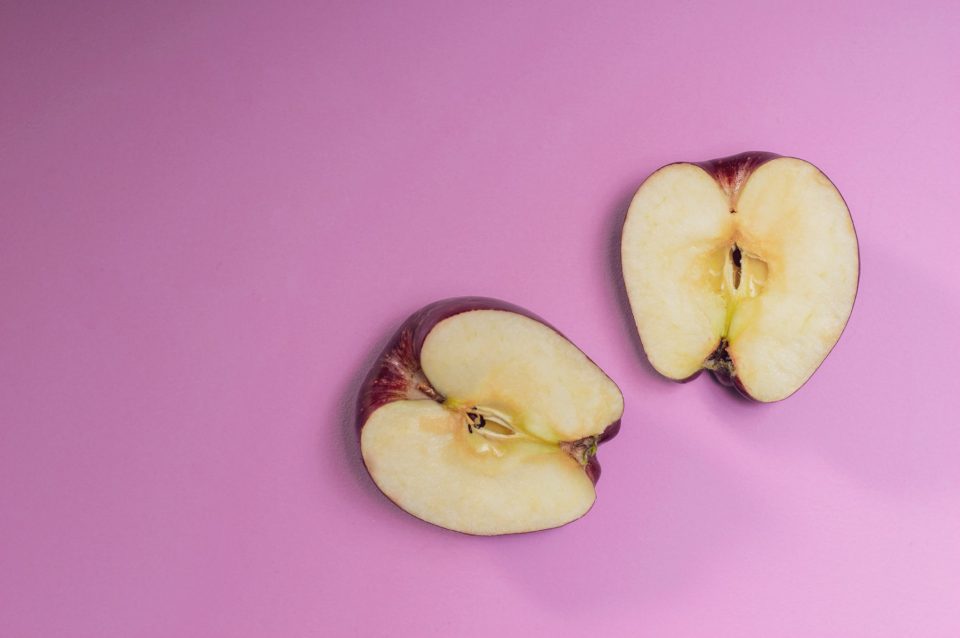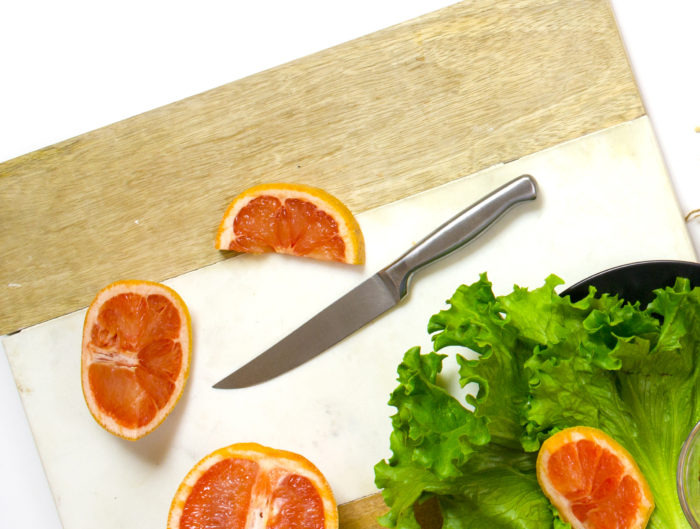Reduce, Reuse, Recycle.
We’ve heard this saying since we were in elementary school. When you hear this phrase you probably start to think about paper and plastic, but since I’m a Dietitian, I want to talk about food.
Specifically food waste.
No matter what your food budget looks like, you probably hate food waste. You just put all that time, effort, and money into shopping and cooking but now that sad meal or wilted, stinky lettuce is going in the trash.
You have wonderful intentions to making healthy choices and cooking more meals at home. Then the kid’s schedule is busier than you thought, you get out of work late, and before you know it you’re at the drive through while your salad greens wilt down to nothing.
A real bummer of a story right? But it’s true! It’s one of the many challenges that people face when making improvements to their diet.
That’s why I’m here to help! No matter what you care about most, your wallet, the environment, or your time, I know you’ll be able to take away some helpful tips from today’s post.
So going back to our phase: Reduce, Reuse, Recycle.
We can’t just focus on one part of this equation to reduce food waste, just like we can’t save the Earth by just recycling.
So let’s start at the beginning…
Reduce
Our first strategy to reduce food waste is to simply reduce the amount of food we purchase or prepare.
Plan Ahead
In order to cut back on how much food ends up in the trash, you have to know REALISTICALLY how much you’re actually going to eat. I know, I know, you’re trying to eat healthy and the first step is actually having it available to eat. However, if every week you’re buying kale for salads at work and really don’t like kale, stop buying it! If you enjoy the taste or spinach, romaine, or leaf lettuce more, and will actually eat it, stop buying kale! You’ll finally enjoy your lunch and reduce food waste in the process.
Shop with a list, and actually stick to it
So now that you have a plan for what you’re going to eat for the week, let’s go shopping! Since you’re already a pro at meal planning (because you read my Beginner’s Guide to Meal Planning, right??), you’re shopping with a list. Sticking to your list is not only important for your budget but also for reducing food waste. It’ll keep you from buying food in excess AND extra treats that end up replacing the healthy snacks you planned for.
Know your food, and how it likes to be stored
Now that you’re home from the grocery store it’s time to put it all away. Storing your food correctly is an important strategy for reducing food waste. If you’re storing your food in a way that speeds up the aging process, you’re giving yourself an even smaller window in which to eat your food. Here is a guide from the Produce for Better Health Foundation I often refer to when I need to remember the best place to store my fruits and vegetables.
Track what you toss
If you’re serious about reducing food waste in your household, I would encourage you to track what you toss for 2-3 weeks. You can write down, or record in your phone, every food you throw away.This will give you great insight to what you are frequently wasting and can begin to make changes in your buying habits.
Keep in mind, you want to track your preventable food waste, not your non-edible waste. Track the wilted lettuce, uneaten leftovers, and the moldy strawberries. That’s your preventable food waste. Don’t worry about tracking the non-edible waste such as banana peels, squash stems, and bones (although I have a plan for those in the Reuse section of this post!).
Serve yourself less
Coming to the dinner table ravenous can not only lead to overeating, but it can also leave a lot of food left on the plate if you overfill your plate. I am a firm believer that you don’t have to be apart of the Clean Plate Club. You need to listen to the hungry and fullness cues your body is giving you and stop when you are comfortably full.
However, leaving food on your plate can be wasteful (hence the origins of the Clean Plate Club!), so start by serving yourself less food to begin with. By eating intuitively, you can always assess your level of hunger and fullness and go back for more food if you need it.
Don’t toss too soon
Many of the dates you see on packaging are related to quality not safety. Therefore, you don’t necessarily have to toss something just because you’re approaching the date on the package. However, this is a sign you need to use it soon so move that item to the front of the fridge or pantry and incorporate it into your meal plan for the coming week. Below is a guide for the meaning behind common dates on food packages courtesy of the USDA.1
- A “Best if Used By/Before” indicates when a product will be of best flavor or quality. It is not a purchase or safety date.
- A “Sell-By” date tells the store how long to display the product for sale for inventory management. It is not a safety date.
- A “Use-By” date is the last date recommended for the use of the product while at peak quality. It is not a safety date except for when used on infant formula.

Reuse
These tips are all about giving new life to foods that are about to go bad or would otherwise end up in the trash.
Love your leftovers
It should go without saying that you need to love your leftovers if you’re going to eat them. If you find that you always throw out half the chili soup you make, then maybe you need to make a ½ batch or freeze half the soup for later. If something you cook doesn’t reheat well, find a way to half the recipe or share with other family, friends, and coworkers to prevent being wasteful. My husband is a great example of this. He is really particular about how leftovers taste when he eats them, so some meals I just do not make extra of.
Soups, Smoothies, Casseroles, and Broth
These types of menu items are my go-to’s when foods are about to go bad.
Spinach starting to wilt? Smoothie or Soup
Peppers looking wrinkled? Casserole or Soup
Chicken/Beef Bones, celery/onion/carrot skraps? Bone broth. Here are two recipes to make bone broth in your slow cooker and instant pot!
h
Recycle
Recycling our unwanted food should be the very last step in saving our food from a landfill. Composting is the best way to ensure that our unwanted food and break down properly and provide necessary nutrients to the soil.
This is very different from your food breaking down in a landfill because in a landfill there is not enough oxygen getting to the food waste.2 As a result, you end up with methane gas production instead of nutrient rich compost.
I don’t claim to be an expert on composting. That’s a project for another day. In the meantime, check out the Environmental Protection Agency’s website for starting to compost outside or in your own home!
References
1 https://www.fsis.usda.gov/wps/portal/fsis/topics/food-safety-education/get-answers/food-safety-fact-sheets/food-labeling/food-product-dating/food-product-dating
2 https://www.epa.gov/sustainable-management-food/sustainable-management-food-basics
Follow me on social media and never miss a new post!



Leave A Reply